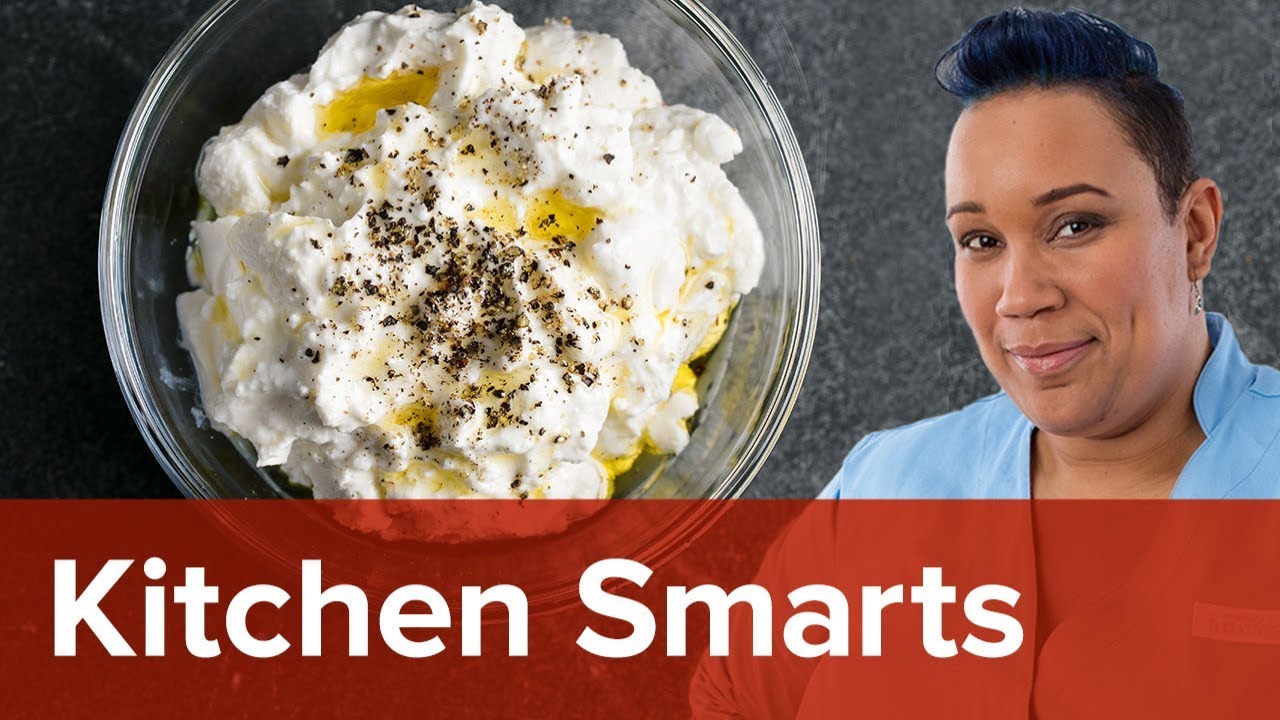Cheese-making at home is actually pretty simple.
Try Our Homemade Ricotta recipe:
Buy our winning colander:
Click here to watch more Kitchen Smarts:
ABOUT US: Located in Boston’s Seaport District in the historic Innovation and Design Building, America’s Test Kitchen features 15,000 square feet of kitchen space including multiple photography and video studios. It is the home of Cook’s Illustrated magazine and Cook’s Country magazine and is the workday destination for more than 60 test cooks, editors, and cookware specialists. Our mission is to test recipes over and over again until we understand how and why they work and until we arrive at the best version.
If you like us, follow us:
Related posts
25 Comments
Leave a Reply Cancel reply
You must be logged in to post a comment.


Excited to make it!
I love this Elle. There is nothing better that fresh ricotta on Bolognese w/ tagliatelle !!
Talk about "stick to you ribs" !!! First class video.
(FYI) As a whole "WHO"?? can remember all the procedure and recipes ( not me, and I consider myself a fairly smart man) so.. that being said. Thank you Test kitchen !!! Videos give an extra dynamic that give the end user a far more important insight. ( now for smell a vision ) !!
physical or chemical change? any one else here for chem?
Can't wait to try!
Holy Fuck I love the internet.
Okay, so whats the deal with the temp. I have heard 185, 190, 195, 200 and boiling. What is the difference. Does it even make a difference?
Ricotta means 're-cooked' or 'cooked again' because you use the leftover whey to make it. What you made is delicious fresh cheese, or pot cheese. If you had taken the leftover whey and added a little bit of fresh milk to it and some more of the lemon juice/vinegar mixture you would have home-made ricotta.
bit concerned about using metal when vinegar or acids are in the recipe…shouldn't it be in done in enamel cookware?
1 to 1 ratio of buttermilk and whole milk, gets the same result, without the "tang" of the lemon or vinegar, much better for making deserts
can we pick some new background music?
does it matter what type of salt?
If you add 1/4 tsp of calcium chloride disolved in 1/4 cup water, you will get more of the milk solids to curdle, especially with pasteurized milk. Fresh, unpasteurized whole milk is best, but I realize this is for the average viewer, so Elle is spot on. The lemon juice tempers the bite of just using vinegar alone.
Thanx Elle, I’ll be keeping this recipe on hand.
NO!!!!! You let the whey run into the sink? That is really wasteful. Leftover whey can still be used to flavor soup stock and also for other purposes.
Unfortunately,we only have ultra pasteurized dairy products down here in SWFL😬
Store-bought ricotta is so bad. It would be great to make my own
Did i just watch paneer being made?
That's not ricotta. That's some kind of queso fresco / paneer hybrid, just with skipping the fully draining and pressing of the curds. What you've got there is like ricotta, and I'll bet it's pretty good, but is not a true ricotta made from the leftover whey of other cheesemaking.
I have a question and a challenge for America's Test Kitchen.
What is the science of curdling? Why does the milk curdle (heat, acidity, proteins … what's going on there?) And is there any way to get plant-based milk to curdle?
far too much acid and stirring! the curds should float and not get broken until after skimmed off the whey.
Fantastic tutorial!
Not ricotta.
Easy enough, might give it a go, will look and see if anyone tried it.
MOAR!
its not ricotta its just cheese curds you dumb bitch